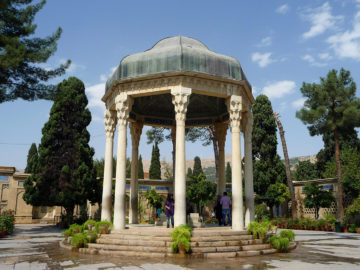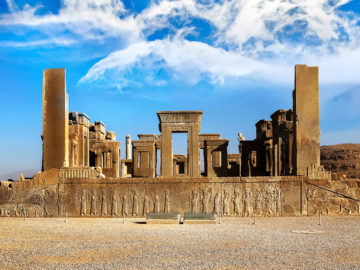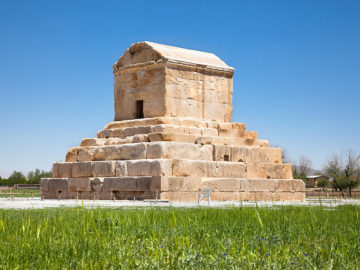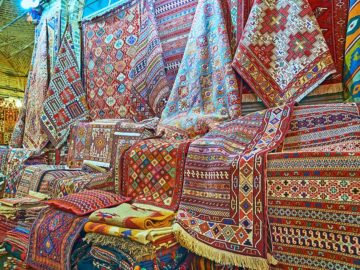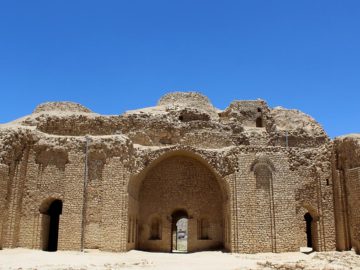Fars province with an area of 122,608 square kilometers is located in the southwest of Iran as the fourth largest province of the country. Fars province borders the provinces of Kerman, Hormozgan, Bushehr, Kohgiluyeh & Boyer Ahmad, Yazd, and Isfahan. It has 29 counties with Shiraz city as the center.Persians, Qashqai Turks, Arabs, and other ethnic groups live in the province where Farsi with the Shirazi dialect is the common language.
In some parts of the province people, especially Qashqai tribes, speak Turkish, while in some other parts, the Arabs speak Arabic. Because of the geographical extent of the province, its climate varies in the northern and southern regions. In highlands, the climate is mild; in the valleys and lowlands, it is moderate and warm, while in the southern parts of the province, the winters and summers are moderate and hot, respectively.

Historically, the Persian who formed their own local government under the support of the Medes in Pars (current Fars), became gradually more powerful and eventually Cyrus, the founder of the Achaemenid Empire (550-330 B.C.), overthrew the Median Empire (678-549 B.C.). Cyrus and his successors formed a vast empire of the time and developed their power using a set of organized and decisive laws. The Achaemenid kings established and chose several cities as their capital such as Takht-e Jamshid or Persepolis, Susa, Babylon, and Ecbatana (Hamedan).
The palaces of the Achaemenid rulers are among the most significant masterpieces of ancient architecture, which their remains are in the ancient city of Parseh. When Babylon and Susa were under siege, Alexander the Macedonian attacked Persepolis, plundering, killing people, and firing the Achaemenid palaces. Years later during the Parthian Empire (247 B.C. – 224 A.D.), Darabgerd, a city in Fars province, was one of the centers of power. As the Parthian Empire declined, Ardashir Babakan rose in revolt, the man who finally founded the Sassanid Empire (224-651 A.D.).
Ya’qūb-i Layth-i Saffārī (Jacob) was the first Emir of the Saffarid Dynasty (861-1003) who seized Fars and chose Shiraz as his capital. Several dynasties including Buyid (934-1062), Seljuk (1037-1194), Salghurids (1148-1282), Mongol (1206-1368), Muzzafarid (1314-1393), Safavid (1501-1736), Afsharid, (1736-1796), and Zand (1751-1794) dominated also over the region. During the governance of Karim Khan Zand (reign: 1751-1779), a magnificent peace and prosperity were established in Fars, while in contrast, the province was damaged and destroyed significantly later due to the wars by Lotf Ali Khan Zand (reign: 1789-1794) and Mohammad Shah Qajar (reign: 1834-1848).
The land of Fars, both during the pre-Islamic and Islamic era, was the center of civilization and culture, containing a great number of historical monuments. Fars was in fact the first center where Persian civilization and culture were developed.
Out of its remained historical monuments and buildings include Persepolis, Pasargad, the historical city of Istakhr, Naqsh-e Rustam, Bishapur, Shapur cave, and the palaces and fire temples of Ardeshir. Importantly, Persepolis, Pasargad, Eram Garden, The Sassanid Archeological Landscape have been registered in UNESCO World Heritage Site.
The collection of Zandieh and Qajar constructs including Arg of Karim Khan, mosque and bathroom of Vakil, Nasir al-Mulk Mosque, and Qavam House as well as the shrine of Ahmad ibn Musa (Shah Cheragh) are among other important tourist attractions in the city of Shiraz.
The most important handicrafts in Fars province include wood carving, carpet weaving, glass blowing (in Meymand city), repoussage, handmade Khorjin (saddle), and Give-Doozi (in the city of Abadeh). Known native foods also include Kufteh Holoo, Kooft Sabzi, Salad Shirazi, Shirin polo (sweet rice), especial Aush for breakfast (Sabzi), Aush Kardeh, and Kalam polo Shirazi (cabbage and rice). When it comes to figures, Mansur al-Hallaj (the Persian mystic and poet) and two valuable Persian poets i.e. Saadi and Hafez are among the past celebrities of Fars province.

